Catching ribbon fish, with their long, slender bodies and distinctive ribbon-like appearance, presents a fascinating challenge for anglers in both saltwater and brackish environments. These predatory fish, also known as cutlassfish or beltfish, are prized for their flavorful meat and are often sought after by fishermen for both commercial and recreational purposes. Successfully targeting ribbon fish requires an understanding of their behavior, habitat preferences, and feeding patterns.
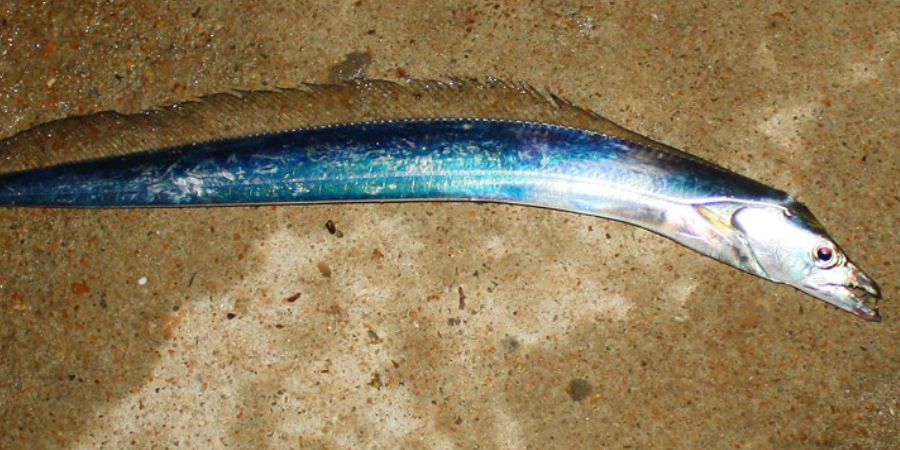
Anglers must also equip themselves with the appropriate gear and techniques tailored to these unique fish. From selecting the right bait and lures to mastering the art of trolling or drift fishing in deep waters where ribbon fish are commonly found, pursuing these elusive creatures offers an exciting and rewarding fishing adventure. This comprehensive guide will explore how to catch ribbon fish, ensuring anglers are well-prepared to reel in these sleek and elusive predators.
The Challenges and Rewards of Ribbonfish Fishing
Fishing for ribbonfish comes with its own set of distinctive challenges and rewards. One of the primary challenges is their unique habitat. Ribbonfish are known to inhabit deeper waters, often making them harder to locate and access compared to other species.
Moreover, their feeding habits can be unpredictable, requiring anglers to be patient and adaptable. Another challenge is their sharp, needle-like teeth which can easily cut through lines if the tackle is not suitably robust. Using wire leaders and careful handling techniques is essential to avoid losing both the fish and the gear.
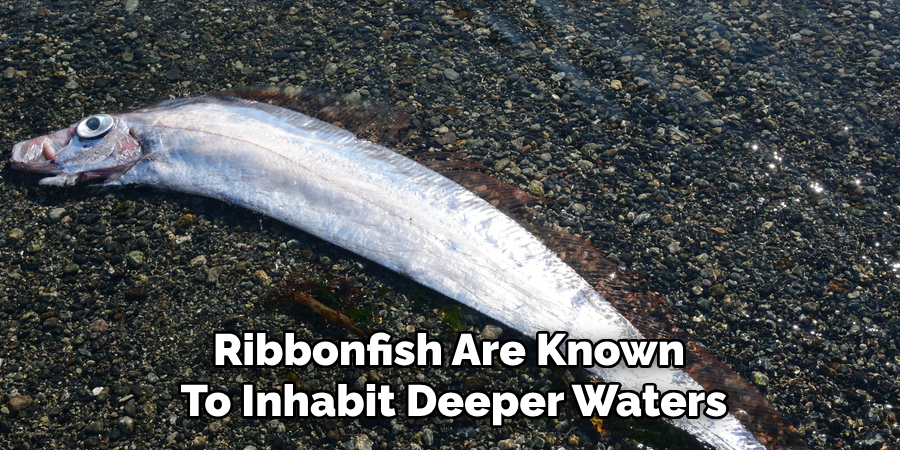
Despite these challenges, the rewards of successfully catching ribbonfish are considerable. Their striking appearance and fighting spirit make for a thrilling fishing experience. Additionally, ribbonfish are prized for their tasty, tender meat, which is a delicacy in many culinary traditions.
The sense of achievement in overcoming the obstacles to catch them adds an extra layer of satisfaction for anglers. The combination of skill, patience, and perseverance required to successfully target ribbonfish makes it an exceptionally rewarding endeavor for both seasoned and novice fishermen alike.
Understanding Ribbonfish and Their Characteristics
Ribbonfish, with their distinct silver-blue sheen and elongated bodies, are easily recognizable and highly sought after. They can grow to impressive lengths, often reaching up to four feet or more. Their bodies are laterally compressed, giving them the iconic ribbon-like appearance from which they derive their name. One of the most striking features of ribbonfish is their dorsal fin, which runs almost the entire length of their back, contributing to their undulating swimming motion.
These predatory fish have sharp, needle-like teeth perfectly adapted for grasping and holding onto slippery prey such as smaller fish and squid. Their large eyes allow for excellent vision in the deeper, darker waters they typically inhabit. Ribbonfish are primarily nocturnal hunters, moving closer to the surface during the night to feed and retreating to deeper waters during the day.
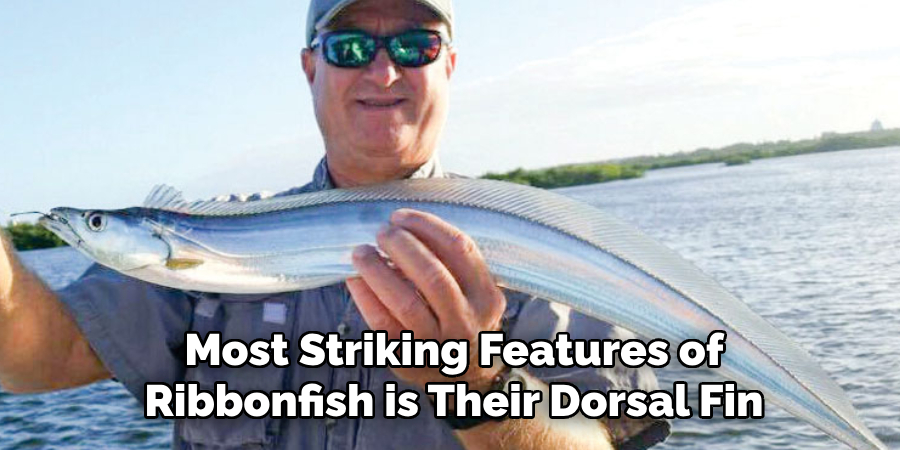
Understanding the habitat preferences and behavioral patterns of ribbonfish can greatly enhance an angler’s chances of a successful catch. They favor temperate and tropical waters and are often found along continental shelves and in slope regions. Their preference for deeper waters means that anglers need to be equipped with the appropriate gear and techniques suitable for these conditions.
By appreciating the unique physical and behavioral characteristics of ribbonfish, anglers can develop more effective strategies for targeting this elusive and thrilling species.
Understanding Ribbonfish Biology and Ecology
To truly master the art of catching ribbonfish, anglers must delve into the biology and ecology of these unique predators. Ribbonfish belong to the family Trichiuridae and are scientifically known as Trichiurus lepturus. They exhibit a range of fascinating biological features that aid in their survival and efficiency as nocturnal hunters. Their elongated, slender bodies are covered with smooth, scale-less skin, which reduces friction as they glide through the water.
Reproduction in ribbonfish involves spawning, where females release their eggs into the open water to be fertilized by males. This usually occurs in deeper waters, and the resulting larvae are pelagic, meaning they drift with the currents until they mature enough to navigate independently. Understanding their reproductive habits is crucial for anglers aiming to respect fishing seasons and ensure sustainable practices.
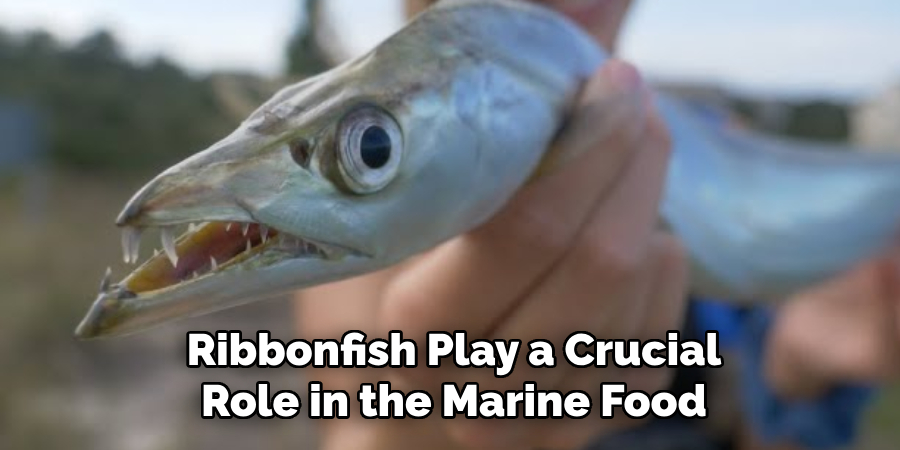
Ecologically, ribbonfish play a crucial role in the marine food web. They are both predators and prey, feeding primarily on smaller fish, cephalopods, and crustaceans while being hunted by larger pelagic species. This dual role is significant for maintaining the balance of marine ecosystems. Their predatory nature helps control the population of smaller fish and squid, contributing to the ecological diversity of their habitat.
Ribbonfish are also sensitive indicators of environmental changes. Fluctuations in water temperature, salinity, and pollution levels can impact their distribution and behavior. As such, their presence and abundance can provide insights into the health of marine environments.
Understanding these ecological relationships enables anglers to target ribbonfish more effectively and responsibly, ensuring that the pursuit of these elegant fish aligns with the principles of sustainable fishing.
Characteristics of Productive Ribbonfish Spots
When it comes to identifying productive ribbonfish fishing spots, several key characteristics can significantly enhance the likelihood of a successful catch. Understanding these attributes will help anglers pinpoint locations where ribbonfish are most likely to be found, thereby increasing their chances of an abundant haul.
Water Depth and Temperature
Ribbonfish are typically found in deeper waters, often ranging from 100 to 600 feet. They are most abundant in areas where the water temperature ranges from 18 to 24 degrees Celsius (64 to 75 degrees Fahrenheit). These parameters provide the ideal conditions for their nocturnal hunting activities.
Underwater Structures
Productive ribbonfish spots often feature diverse underwater structures such as reefs, wrecks, and drop-offs. These structures provide shelter and attract smaller prey species, making them prime hunting grounds for ribbonfish. Anglers should use sonar technology to locate these underwater features and adjust their fishing techniques accordingly.
Bait Presence
The presence of schooling baitfish is a reliable indicator of productive ribbonfish spots. Ribbonfish are opportunistic feeders and will follow schools of smaller fish. Observing seabird activity, as they often feed on baitfish, can also help in locating potential fishing hotspots.
Time of Day
Ribbonfish are primarily nocturnal and tend to come closer to the surface to feed during the night. Fishing during the late evening or early morning hours can be more productive. However, during the day, focusing on deeper waters where ribbonfish retreat can also yield successful results.
Water Clarity
Clearer water conditions often enhance the feeding efficiency of ribbonfish, as their large eyes are adapted to low-light but clear environments. Avoiding turbid waters where visibility is compromised can improve catch rates.
By paying attention to these characteristics, anglers can strategically choose their fishing spots and employ the most effective techniques, ensuring a more productive and enjoyable ribbonfish fishing experience.
10 Methods How to Catch Ribbon Fish
Method 1: Trolling with Lures
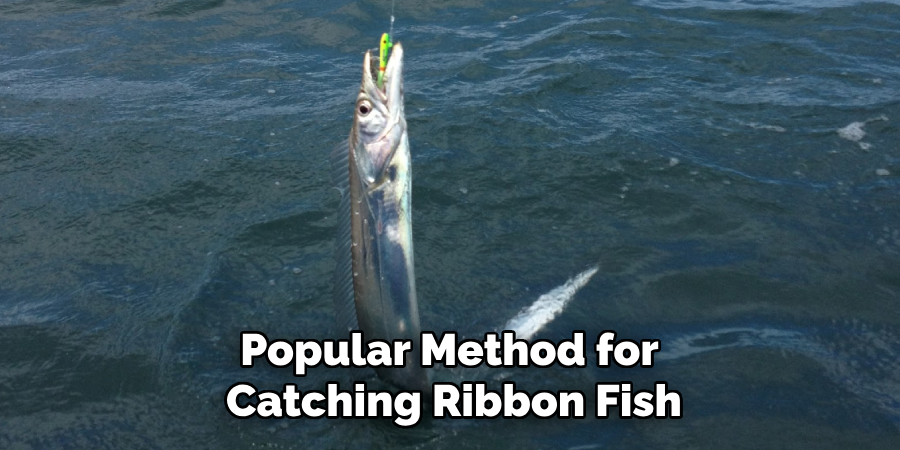
Trolling with lures is a popular method for catching ribbon fish, especially in open waters or along coastal areas. Use a trolling rod and reel combo designed for saltwater fishing, spooled with 20-30 pound monofilament or braided line. Select deep-diving plugs, spoons, or swimming lures in bright colors that mimic the baitfish ribbon fish prey on.
Troll your lures behind a boat at a slow to moderate speed, varying your trolling speed and direction to cover a wide area. Ribbon fish are attracted to the movement and vibration of trolling lures, making this method highly effective for targeting them.
Method 2: Drifting with Live Bait
Drifting with live bait is a productive method for catching ribbon fish, particularly in areas with strong currents or tidal flows. Use a medium spinning rod and reel combo spooled with 15-20 pound fluorocarbon line for sensitivity and low visibility. Rig live bait such as small fish, shrimp, or squid on a simple rig with a circle hook. Drift your bait along the bottom or just above the seabed, allowing it to move naturally with the current. Ribbon fish are opportunistic feeders and will be drawn to the scent and movement of live bait drifting in the water.
Method 3: Jigging
Jigging is an effective technique for catching ribbon fish, especially when they are holding near the bottom or in deeper waters. Use a heavy jigging rod and reel combo spooled with 30-50 pound braided line for strength and control. Select heavy metal jigs or vertical jigs in weights and colors that match the local baitfish.
Drop your jig to the bottom and jig it up and down with sharp, erratic movements to imitate injured or fleeing prey. Ribbon fish are attracted to the fast-paced action of jigging and will often strike aggressively when they see the jig moving.
Method 4: Casting with Artificial Lures
Casting with artificial lures is a versatile method for catching ribbon fish, allowing you to cover a lot of water and target fish in different depths and habitats. Use a medium spinning rod and reel combo spooled with 15-20 pound braided line for casting distance and control. Select lures such as spoons, swimbaits, or soft plastics in colors that resemble the baitfish ribbon fish feed on. Cast your lure near structure, drop-offs, or current breaks, and retrieve it with a steady, rhythmic motion to imitate a swimming baitfish. Ribbon fish are ambush predators and will strike lures that mimic their natural prey.
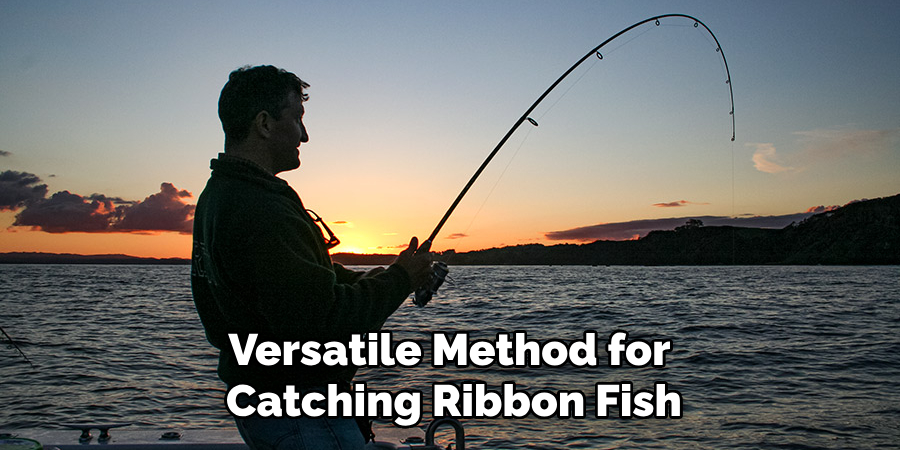
Method 5: Bottom Fishing with Cut Bait
Bottom fishing with cut bait is a traditional and effective method for catching ribbon fish, especially when they are feeding near the seabed. Use a medium-heavy spinning rod and reel combo spooled with 20-30 pound monofilament or braided line for strength and sensitivity. Rig cut bait such as squid, mackerel, or sardines on a bottom rig with a circle hook. Drop your bait to the bottom and wait for the ribbon fish to find it. Ribbon fish are scavengers and will be drawn to the scent and movement of fresh-cut bait drifting in the water.
Method 6: Chumming
Chumming is a technique used to attract ribbon fish to your fishing area by dispersing small particles of bait in the water. Use a chum bag or bucket to disperse small pieces of cut bait, fish oil, or fish meal near your fishing spot. The scent and oil slick created by the chum will attract ribbon fish from a distance, increasing your chances of a bite. Chumming is particularly effective when fishing from a stationary position, such as a pier or anchored boat, allowing the chum to disperse and draw fish to your location.
Method 7: Fishing at Night
Fishing for ribbon fish at night can be highly productive, as they are nocturnal feeders and are more active after dark. Use a medium spinning rod and reel combo spooled with 15-20 pound fluorocarbon line for sensitivity and low visibility. Rig live bait or artificial lures and fish them near structure, drop-offs, or current breaks where ribbon fish are likely to be feeding. Ribbon fish are attracted to the movement and vibration of lures and baits at night and will often strike aggressively in the darkness.
Method 8: Using Sabiki Rigs
Sabiki rigs are multi-hook rigs designed to catch small baitfish, making them an effective way to target ribbon fish. Use a light spinning rod and reel combo spooled with 10-15 pound monofilament line. Attach a sabiki rig to your mainline and bait each hook with small pieces of shrimp, squid, or fish. Drop your sabiki rig to the bottom and jig it up and down to attract baitfish. Once you have caught enough baitfish, switch to a larger hook and rig them as live bait to target ribbon fish. Sabiki rigs are convenient and efficient for catching baitfish and can help you locate and catch ribbon fish.
Method 9: Fishing near Structure
Ribbon fish are often found near structure such as reefs, wrecks, and underwater ledges, where they can ambush prey and seek shelter from predators. Use a fishfinder or chart to locate underwater structure and fish along the edges or overhangs where ribbon fish are likely to be hiding. Anchor your boat or fish from a stationary position near the structure and cast your bait or lures close to the structure. Ribbon fish will be attracted to the cover and will strike quickly when they see an opportunity to feed.
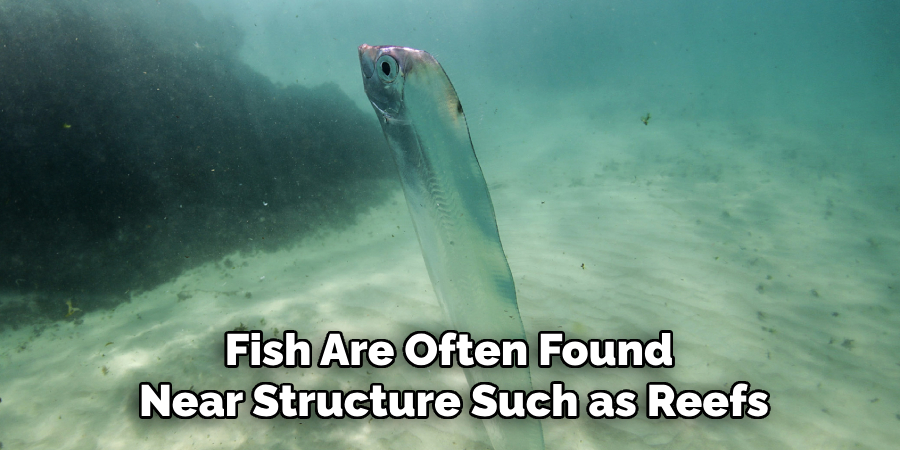
Method 10: Using Lighted Lures
Using lighted lures is a specialized technique for catching ribbon fish, especially in deep or murky waters where visibility is limited. Use a medium spinning rod and reel combo spooled with 15-20 pound braided line. Select lighted lures or glow-in-the-dark lures that emit light and attract fish in low-light conditions. Cast your lighted lure near structure, drop-offs, or current breaks, and retrieve it with a steady, rhythmic motion to attract ribbon fish. The combination of light and movement is highly effective for enticing ribbon fish to strike, even in dark or murky waters.
Things to Consider When Fishing for Ribbon Fish
When planning your fishing trip for ribbon fish, there are several factors to keep in mind to ensure a successful and enjoyable experience. First, understand the local regulations and obtain the necessary fishing licenses and permits. Regulations may vary by region and might include size limits, catch limits, and specific seasons for fishing ribbon fish.
Weather conditions play a significant role in fishing success, so check the forecast before heading out. Favorable weather with calm seas and clear skies will improve visibility and make it safer to navigate and fish. Additionally, consider the tides and currents, as ribbon fish are more active during certain tidal movements and will follow the prey driven by these changes.

It’s also essential to have the right gear and tackle tailored for ribbon fish. Their long, slender bodies and sharp teeth require sturdy rods, reels, and lines, as well as specialized hooks and lures. Using the appropriate bait, whether live, cut, or artificial, will greatly increase your chances of a bite.
Lastly, patience and persistence are key. Ribbon fish can be elusive, so be prepared to try different techniques and locations if fishing is slow. Observing the behavior of other marine life and adjusting your strategy accordingly can also lead to a more fruitful fishing expedition.
Conclusion
Catching ribbon fish requires a combination of the right techniques, understanding their behavior, and using appropriate gear. By mastering these ten detailed methods, you can enhance your fishing experience and increase your chances of success. Whether you prefer trolling with lures, jigging, or bottom fishing with cut bait, each method offers unique advantages and challenges.
Understanding the habitat and feeding habits of ribbon fish, along with selecting the appropriate gear and techniques, is crucial for effective fishing. Hopefully, this article gave you some helpful tips about how to catch ribbon fish successfully, so now that you have the proper knowledge on how to get the job done, why not give it a try today?
About the Author
Jennifer Branett is the author of Fishy Kayak and an expert in fish-related fields, with over 10 years of experience. Her work blends passion for fishing with a commitment to conservation.
Educational Background
Degree: Bachelor’s in Marine Biology
Institution: University of California, Santa Barbara
Specializations: Aquatic ecosystems, fish behavior, and sustainable practices
Professional Experience
Conservation Projects:
Collaborated with local organizations to restore aquatic habitats
Developed educational programs on sustainable fishing practices
Publications:
Authored articles for fishing magazines and environmental journals
Featured speaker at fishing expos and conservation conferences
Key Areas of Expertise
Fishing Techniques:
Kayak fishing strategies
Freshwater and saltwater fishing methods
Environmental Stewardship:
Advocacy for sustainable fishing
Promoting biodiversity in aquatic environments
Awards and Recognition
Recipient of the [Specific Award Name] for contributions to marine conservation
Recognized as a leading voice in the fishing community by [Organization/Publication Name]
Community Engagement
Workshops and Seminars:
Regularly hosts events to educate anglers on sustainable practices
Engages with youth programs to inspire the next generation of fishers
Online Presence:
Maintains an active blog sharing tips, stories, and conservation efforts
Engages with followers on social media to promote fishing ethics
Personal Interests
Enjoys kayaking in scenic locations
Passionate about photography, capturing the beauty of nature
Advocates for local conservation efforts in her community
